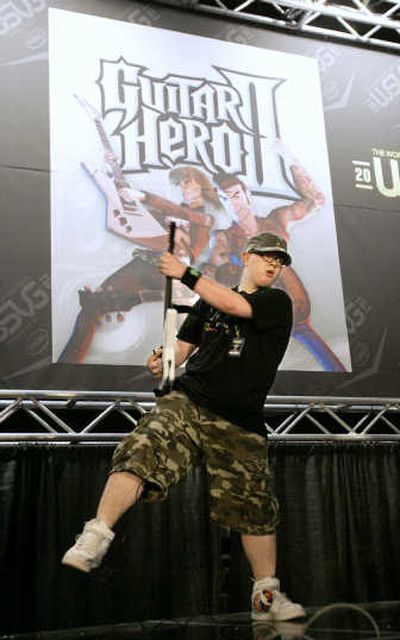Video gamers have a life … really

LOUISVILLE, Ky. — Matt Ringel knows there’s a certain image that comes to mind when you start talking about hardcore video gamers: think teenage boys with messy hair and dark circles under their eyes from staying up all night, their eyes glued to a screen and their fingers frantically flitting about a keyboard or a controller.
It’s an image Ringel knows well. A passionate gamer even as he closes in on 40, Ringel has spent his fair share of long nights playing with his friends.
But now as the commissioner of the World Series of Video Games, Ringel is eager to dispel the notion of gamers as soda-swilling, junk food-eating slackers with an aversion to showers and social activity.
The majority of the players who will compete in one of the handful of World Series events this year have a life, Ringel said. Even better, they have personality.
“These guys, it’s totally antithetical to `the lazy gamer,”’ Ringel said. “They’re highly regimented, highly disciplined. They’re into physical conditioning. They’re normal people.”
Now in its second year, the World Series offers gamers the chance to compete in a handful of popular titles — including “Guitar Hero II,” “World of Warcraft” and “Quake 3” — with the winners taking home thousands of dollars in prize money. The series latest event started Thursday in Dallas.
Yet Ringel’s ultimate goal isn’t just to bring the best gamers in the world together. He’s trying to make the World Series into a TV-ready venture in an effort to give the gaming world some crossover appeal.
To that end, he’s created a system in which the top players in a given game are seeded and accumulate points based on their performance. Part of the prize money for the winners goes toward a travel voucher designed to help them attend the next event. The top point winners at the end of the year will travel to Dreamhack, Sweden, for the finals.
Ringel thinks by having the same faces pop up in different places he can present story lines as part of the TV package the World Series has with CBS. The World Series will make four appearances on the network this summer.
“You want to get the viewer involved,” he said. “It helps if they can identify the top players.”
Ringel said similar strategy in Asia has made the top players there “rock stars.”
In the end, it’s about entertainment, which explains why the World Series event in Louisville two weeks ago looked more like a carnival midway than a darkened basement full of zombielike gamers.
There were ring announcers calling live play-by-play during “Fight Night” bouts and judges unleashing their inner Simon Cowell to “Guitar Hero II” contestants. There were two life-size Formula 1 cars serving as racing simulators and actual brackets — just like for college basketball’s March Madness — on a wall, monitoring the progress of each game.
Ringel understood early on that the World Series could not be about two people mashing controllers while people stand around and watch.
By adding a human element to games like “Guitar Hero II,” Ringel knew he was giving viewers something to relate to.
“You see people competing, and that’s not such a foreign behavior,” he said. “People know how to watch that. They watch `American Idol’ all the time.”